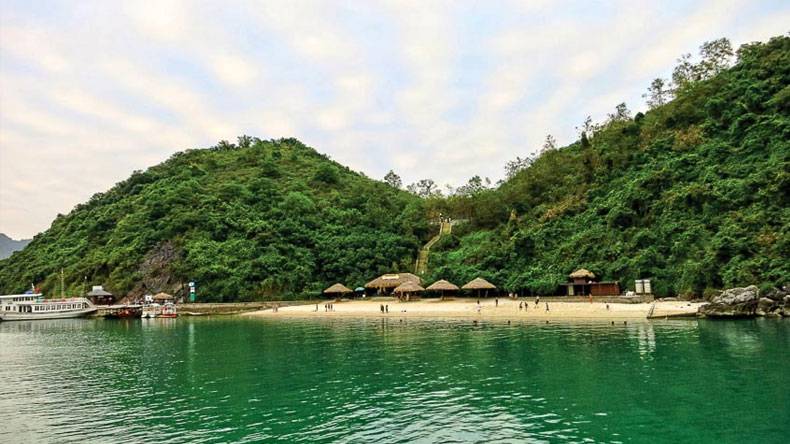Halong Bay Guide
HALONG BAY CULTURAL AND HISTORICAL VALUES
The physical beauty of Ha Long Bay consists of its mountains, water, clouds, caves and grottoes. Many, however, do not realise that Hạ Long was also the cradle of an ancient people who helped create the present Hạ Long culture.
At the end of 1937, a Swedish archaeologist named Anderson, together with two French archaeologist sisters named Conani, journeyed for months through Ha Long sea. They climbed mountains, visited caves and explored the coastline, finding many stone artifacts including axes, grinding tables, sewing needles and jewelry. The archaeologists named the culture that formed these remnants “Ngoc Vung”. In the years following this initial exploration, Vietnamese archaeologists continued the research and made many new excavations, discovering more archaeological sites, such as Dong Mang, Xich Tho and Soi Nhụ. Through an area of some hundreds of square kilometers, they discovered many stone artifacts and pieces of broken pottery.
Throughout its development, Ha Long has had a particularly significant position because of its location on the important communication and trade routes between China, Japan and Thailand. Gradually, it became the center of cultural and commercial exchanges between these countries and ancient Vietnam. The book Comprehensive History of Dai Viet reads: “In the second month of the spring of the year of Ky Ty, the 10th year of the reign of Ly Anh Tong (1149), the commercial port of Van Don was established.” In the long period overlapping the Ly, Tran and Le dynasties, Van Don was a place of busy commercial and cultural exchanges between Vietnam and its Southeast Asian neighbours. A remaining vestige of the ancient commercial port is Cai Lang Wharf (Quan Lan).
Van Don is also a site that witnessed glorious feats of war against the invasion of Yuan-Mongol warriors . It was here that the enemy leader, General Truong Ho, had an entire fleet of food supply boats set ablaze by Tran Khanh Du. This contributed greatly to the victory of Bach Dang.

Closely linked to this animated commercial centre were many religious architectural constructions built to meet the requirements of both traders and the population that practised Catholicism and Buddhism.
In particular, in the central zone of the present UNESCO World Heritage Site area, there have recently been fascinating archaeological discoveries at Me Cung, Thien Long and Tien ong grottoes. The quantity of ancient shellfish in the Melina Spring, which form 1.5 m-thick heaps of shells, amounts to hundreds of cubic metres of human activity.
The archaeological sites of the Ha Long culture are distributed everywhere, but are mostly found on the sandy beaches of the coastline, and in these caves and grottoes: Ngoc Vung, Tuan Chau, Xich Tho and Dong Mang. There are also sites far from the coast, such as Thoi Gieng and Tien ong. Wherever the remnants of the first peoples of Hạ Long are found, they seem to bear a common characteristic: the use of the same materials, techniques, forms and designs. Scientists have called it the “Ha Long culture of the late period of the new Stone Age.”
At Cai Lang Wharf, along its 200m-long coastline, scientists have found broken pieces of pottery and china forming a 0.6 m-thick layer. Ages of the artifacts date from between the Ly and Tran dynasties. Also found in the area are the foundations of ancient houses once built along the wharf. In other areas, such as Cong Dong, Cong Yen, Ngoc Vung, Quan Lan and Cai bau, more ancient wharves have been found, along with many similar artifacts.
On Cong Dong Island, four pagodas were built. Among them, the Lam Pagoda is one of the most ancient in the area. It was built under the Tran Dynasty with three gates, a shrine to Buddha, an anterior cult room and a house of ancestors. On the northeast side of the pagoda was a tower, the remnants of which indicate it was a large construction with religious importance.